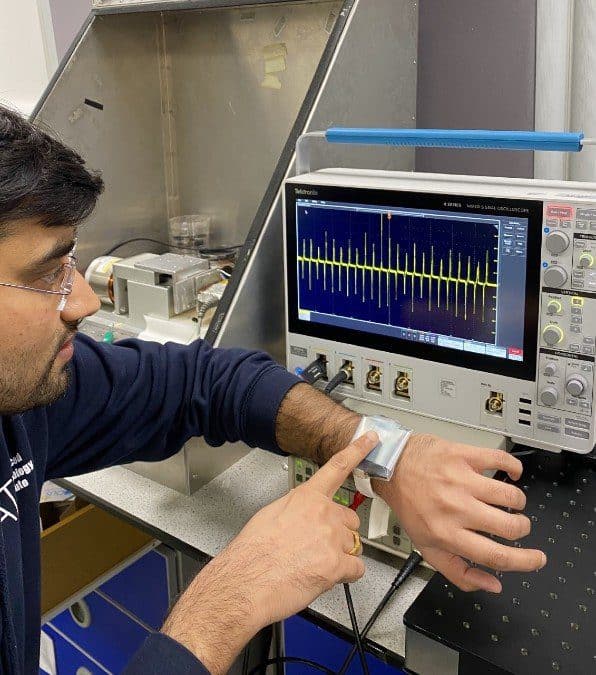UNIS Scientists Develops Energy-harvesting Wearable Device Made From Recycled Materials
2 min. read
Published on
Read our disclosure page to find out how can you help MSPoweruser sustain the editorial team Read more


The scientists at the University of Surrey are hitting two birds with one stone in the invention they unveiled earlier this March: a recycled wearable device that can be powered by the wearer’s movement.
According to Dr. Bhaskar Dudem, project lead and Research Fellow at the University of Surrey’s Advanced Technology Institute, the wrist device the team has unveiled is made from recycled materials – discarded paper wipes and plastic cups.
“It won’t be long until we have to ask ourselves which of the items we own are not connected to the internet,” Dr. Dudem said. “However, the current internet-of-things (IoT) revolution highlights the simple fact that our planet doesn’t have the raw resources to continue to make these devices which are in such high demand. Our research demonstrates that there is a path to creating sustainable technology that runs on electricity powered by us, the users of that technology.”
The prototype device can send Morse code and runs through the energy harvested from the wearer’s movements. It works using the materials called “Triboelectric Nanogenerators” that become electrically charged after coming into contact with one another. The materials generally use static charge to gather energy from the movements via the electrostatic induction process.
Due to its promising capability, the scientists realized the technology’s potential to change the smartwatch industry. Now, the team is focusing on plans to use it on the said wearable device, believing that it is a future game-changer for the consumer, medical and security sectors.
“The core mission of the Advanced Technology Institute is to help build a world where clean energy is available to all,” said Professor Ravi Silva, Director of ATI at the University of Surrey. “Our energy-harvesting technology embodies this key mission, and we stand ready to work with industry to ensure this technology reaches its full potential.”








